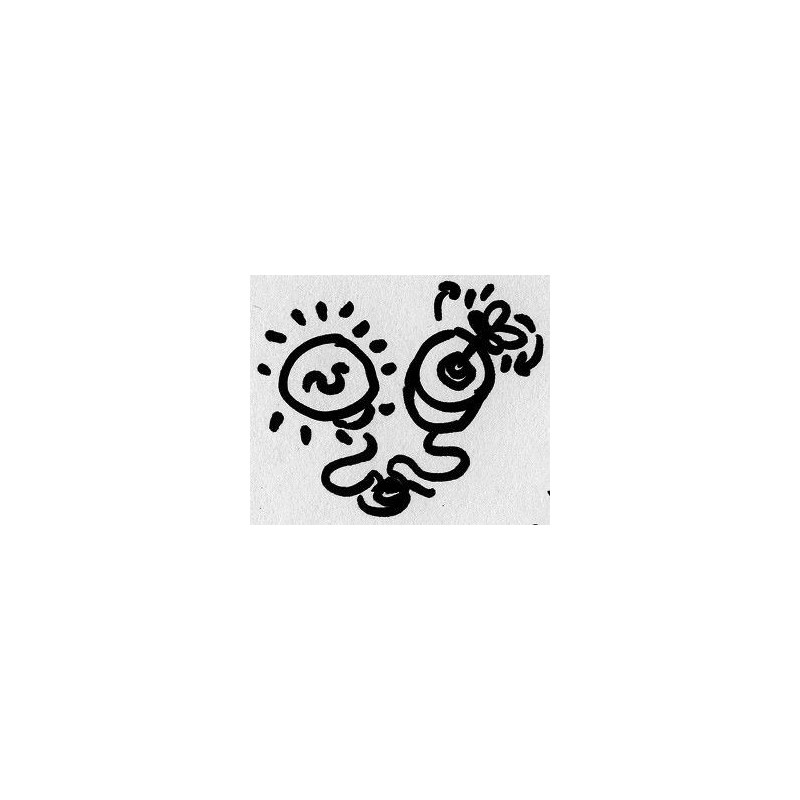



General Information on Actuators and their control in real-time: motors, lighting, electromagnets, percussion devices, servomotors, relays, LEDs, etc.
What are they? How do they work?
In an interactive or automated installation (model, multimedia project, artistic installation, dance or theater performance, etc.), the actuator is how the work manifests itself, evolves, and becomes perceptible to the spectator.
The change may be visual, auditory, or even tactile, but it is always made possible by an actuator: motors, lights, speakers, image projection systems, magnets, screens, etc. A summary of a course on different actuators and their characteristics is available here.
However, controlling these different elements can sometimes be tricky. That is why we have developed several modules that allow for the simple control of all kinds of actuators using the MIDI protocol. These include motors (servomotors, windshield wiper motors, stepper motors, DC motors), relays, and lighting (bulbs, LEDs, neon lamps). This brief introduction to actuators will give you an idea of their diversity.
Available Control Boards
Examples of Actuators
Direct MIDI Actuators
These modules are dedicated to a specific type of actuator. For example, we offer control boards for servomotors via the MIDI protocol. Servomotors are small motors commonly used in modeling.
- 8-Servomotor Board: Allows real-time control of 8 motors. Depending on motor quality, they can be controlled in 128 steps (different positions) or in 8000 steps.
- 4-Servo / 4 High-Definition Transistor Board: Manages both movement and lighting.
- 8-Analog Output Board: Controls DMX dimmers or small actuators requiring continuous voltage variation between 0 and 10V.
- 64-LED Board: Controls a light matrix of 64 LEDs.
For on/off commands, several options exist:
Relays: Mechanical switches that allow switching 220V.
Electronic switches: Silent switches for low voltage circuits.
For gradation, PWM (Pulse Width Modulation) is widely used. This technique allows voltage output modulation while minimizing component overheating.
Interface-Z has developed control boards that allow for MIDI control of various actuators, either as On/Off (turning on/off, relay switching) or with gradation (smooth effects):
- 8-Actuator Control Board
- 32-Actuator Control Board
- (formerly 24-Actuator Control Board )
These boards can control a variety of actuators: lamps, LEDs, electroluminescent wires, small motors, electromagnets, solenoid valves, screens, projectors, etc. This is done through dedicated daughter boards designed for specific actuators.
For On/Off Control:
- 2 to 8-Relay 2RT Board: Switches 220V or devices powered at lower voltages.
- 8-Relay 1RT Board: Switches 220V or devices powered at lower voltages.
- 8-Reed Relay Board: Silently switches relays.
For Variable Intensity Control:
- 8-Low-Power Transistor Board (2A): Controls small motors, low-power halogen lamps (20W), classic incandescent bulbs.
- 8-High-Power Transistor Board (14A): Controls motors, low-voltage halogen lamps, pinball machine actuators, and other high-current devices.
- Transistor boards can also work with a Motor Reversal Module.
- 8-LED Board: Controls specific LED lighting.
- 64-LED Board: Manages a matrix of 64 LEDs (non-white).
- The MIDI-to-DMX Conversion Board allows control of lamps or projectors at 240V (or higher) using a different principle than control boards.
- Moteur à courant continu (bas voltage) : 8 Transistors basse puissance / haute puissance, 4 Servos / 4 Transistors H.D. ;
- Certains appareils à moteurs 220V (ventilateurs par exemple) : Relais, module Midi-DMX ;
- Servomoteurs : 8 Servo 128 / 3500 pas, 2 servo/4 lampes.
- Vérins électromagnétiques, électroaimants (basse tension) : 8 Transistors basse puissance / haute puissance, 4 Servos / 4 Transistors H.D..
- LEDs, LED Strips, LED Bulbs: 8-LED Board, 64-LED Board.
- Low-Voltage Incandescent Lamps (halogen bulbs, car headlights): 8-Low-Power/High-Power Transistors, 4-Servo/4 HD Transistors.
- Fluorescent Tubes (220V): Controlled by Relays, MIDI-DMX Module (for flickering effects).
- Small Neon Tubes (PC tuning): 8-Low-Power/High-Power Transistors, 8-Analog Outputs.
- Electroluminescent Filaments: 8-Low-Power Transistors.
- 220V Bulbs: Relays, MIDI-DMX Module.
- Low-Voltage Theatrical Spotlights (e.g., 12V 75W halogen): 8-High-Power Transistors.
- 220V Stage Spotlights: MIDI-DMX Module.
- Large Theater Projectors: MIDI-DMX Module.
- Speakers, Vibrating Elements.
- Video Projector, LCD Screen, CRT or TV, Slide Projector.
- Motor Torque : Its ability to lift a mass at the end of a lever arm. A torque of 3 kg/cm means that the motor can lift:
3 kg at the end of a 1 cm lever,
300 g at the end of a 10 cm lever,
30 g at the end of a 1 m lever.
- Dimmer (Gradator) : A circuit that allows varying the brightness of an incandescent lamp (traditional or halogen) or the speed of a DC motor. Usually controlled via the DMX protocol.
- Gradator (Dimmer) : A circuit that allows adjusting the brightness of an incandescent lamp (traditional or halogen).
- DC Motor: A motor with high starting torque, where speed is proportional to supply voltage and torque is proportional to current. It is easy to implement, and speed adjustments are simple, but precise speed/position control requires complex feedback systems.
- Stepper Motor : A motor whose torque decreases quickly with speed but allows precise static positioning. Position and speed control are simple, as well as direction changes. Requires a dedicated control board for power and operation.
- Servomotor : A DC motor with angular position control. It has high torque due to its built-in gearbox and is very useful for mechanical applications. Its range is limited (e.g., 120° or 180°), but it allows precise positioning within those limits. Not easy to use without a specific control board. (Dedicated page: here.)
Il n'y a pas d'autres documents disponibles ici pour le moment.
You might also like